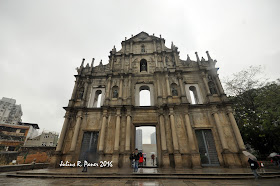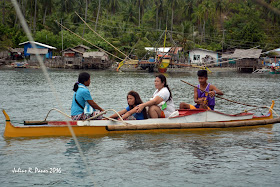Last Sunday (January
24) was just an ordinary hiking day for me as I settled for a short day hike up
Mt. Kiyawa, the highest peak of the municipality of Sta. Maria in Davao
Occidental. It was still part of my Occidental lifescape tour. With me during
the climb were SJR buddy Plonge and good friend Rhoda
We started the climb
at around 8:30 in the morning and although some isolated fogs surrounded the
mountain earlier, the extreme hot weather took over in the late morning when we
arrived at the summit. The trail was composed majority of single track with
some cultivated farm lands visible along the way. There were portions of lose rocks
and few cliffs experience when we were about to reach the ridge. Two major
sceneries graced us while walking along the ridge, the settlement area of Sta.
Maria on the right side and the panoramic Davao Gulf on the other side.
Mt. Kiyawa is measured
approximately 400 meters above sea level and is a good day hiking destination
in the province of Davao Occidental. I was told by Rhoda that the summit of
Kiyawa has always been a venue for Sta. Marians to celebrate New Year’s eve.
The summit offers a clear 360-degree view of the town and neighbouring places.
On the southern part we saw the huge coconut plantation that borders the towns
of Sta. Maria and Malita, while on the northern part I saw the Malalag Bay
seascape that also includes Piape Hill of Padada and the mountain ranges of
Malalag.
The highest point of
the mountain was the Sto. Niño shrine owned by a private person there. I met
some folks there working to improve some structures in preparation for their
fiesta schedule within the month. The barangay folks in the place are a mix of
Christian, Muslin and some Tagacaolo natives.
At around 10:30 in the
morning we started going down on the other side in Barangay San Agustin with
the more favourable trail of coconut and banana farm. We proceeded directly to one of Sta. Maria’s
popular beach destinations, the Mariscal Beach Resort also known as the town’s
Little Boracay.
To all my day-hiking
friends, I suggest you try scaling Mt. Kiyawa and it will surely be a good
hiking destination for first-timers and those who would like to go summit-camping
overnight. One more reminder, the summit and trail of Mt. Kiyawa has no water source,
so better refill potable water before doing the hike. Mt. Kiyawa is also a dry
mountain with no vegetation cover from the trail head to the entrance of the
ridge. On the way to the summit, however, is made up of coconut trees and some
light houses that serve as stopovers.






































